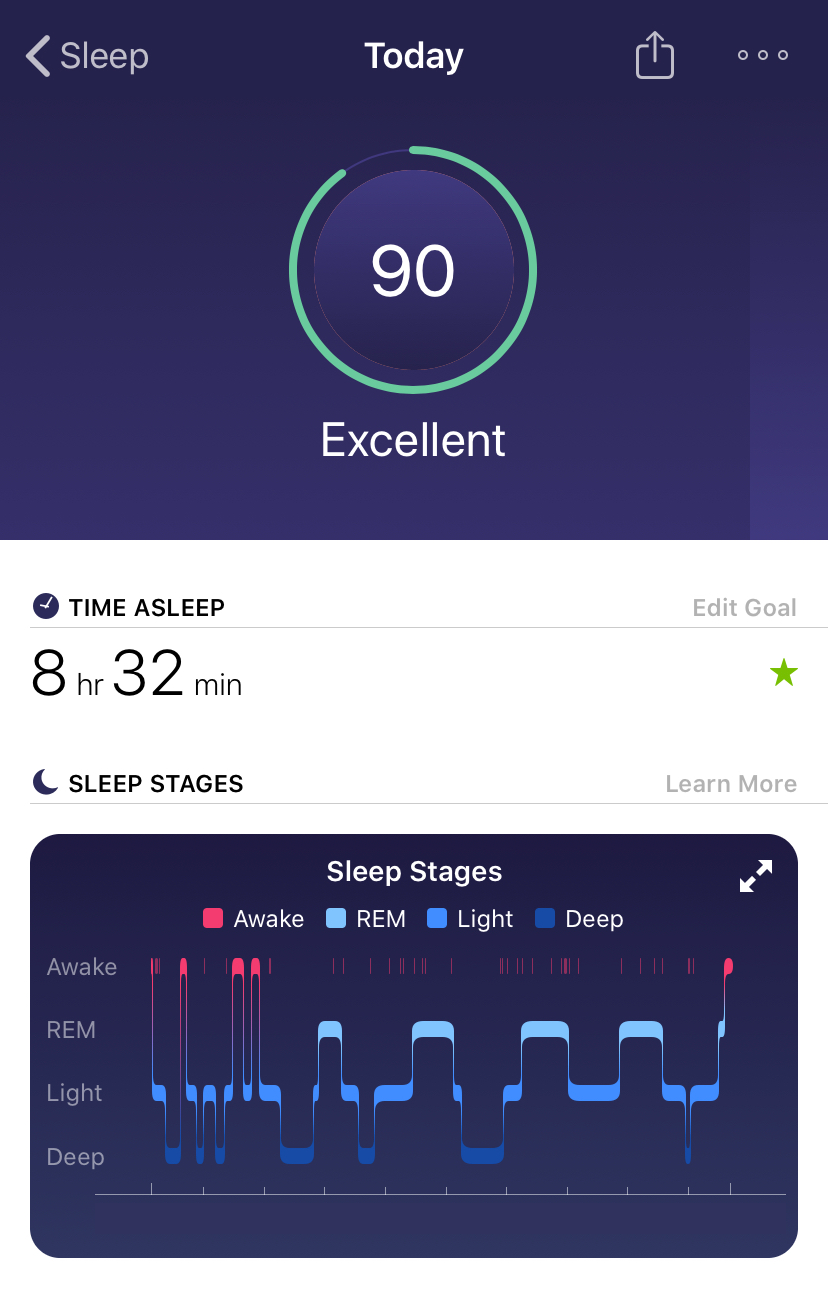Continuing for a day more with the topic of Fitbit: many analytics that go beyond the basic visualization that is displayed in the app or is available for download on the web dashboard, is only available via a paid subscription, which Fitbit calls Premium. We talked about Premium a little in the context of discovery vs curation.
To give you an example, this is the sleep phase chart in the company’s app for a single night’s sleep:
From the Fitbit site, you can export your sleep data. But my data for the week only includes summaries on this sort (data hidden)
So clearly Fitbit has access to much more granular data to generate that chart than is required to generate that table. However, that access is only available via the Fitbit API. For instance here is the API documentation page for sleep data.
This endpoint supports two kinds of sleep data:
stages : Levels data is returned with 30-second granularity. ‘Sleep Stages’ levels include deep, light, rem, and wake.
classic : Levels data returned with 60-second granularity. ‘Sleep Pattern’ levels include asleep, restless, and awake.
If you write your own software, you can authenticate to and download your own data at down to thirty second granularity. For the example in the chart above, that’s 1024 data points, each stating the timestamp and which stage of sleep I was in. This is extremely valuable (and not to mention my own data recorded by a device i have paid for!) I support Fitbit’s decision to restrict analytics such as sleep score to premium users – this is Fitbit’s IP and its prerogative. However, it does need to make its users’ raw data available for download much more widely. It should not require technical expertise.
This article describes an example of a person downloading and charting his own heart rate data from Fitbit. I intend to teach myself to download and process my own data. In fact, I am going to explore if I can use iOS shortcuts and the actions that Data Jar makes available to Shortcuts to process JSON data – and Charty to plot graphs. We will revisit this some time.


